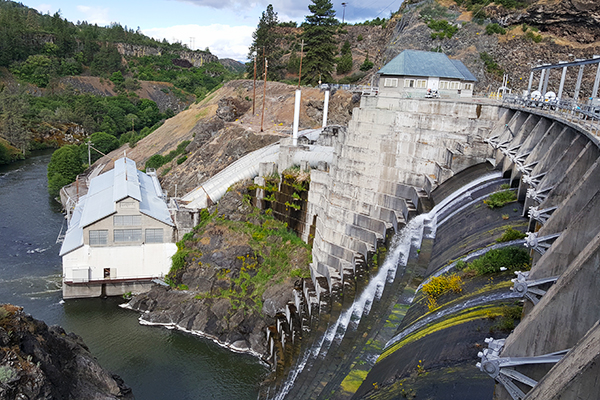
Klamath River Renewal Project
Client
Kiewit Infrastructure West Co.Location
California and Oregon, USAHighlights
- Largest dam removal and river restoration project in U.S. history
- Detailed design for the removal of four aging hydroelectric dams
- Dam modifications design
- Reservoir drawdown planning
- Habitat restoration
- Road, bridge, and culvert infrastructure improvements

Project Overview
Considered the largest dam removal and river restoration project in U.S. history, the Klamath River Renewal Project involves the removal of the J.C. Boyle, Copco No. 1, Copco No. 2, and Iron Gate dams, located along the Klamath River in southern Oregon and northern California. The four dams, which were built between 1918 and 1962, impound water for hydroelectric facilities with a combined capacity of 163 MW.
Once complete, the project will reconnect over 400 stream-miles of the Klamath River, restoring fish passage to historic habitat and spawning grounds.
Project Role
Since 2019, Knight Piésold has been working closely with the prime contractor Kiewit Infrastructure West Co. (Kiewit) as their prime civil design partner, under a progressive design-build (PBD) contract with the project owner Klamath River Renewal Corporation (KRRC). The PBD delivery model allows for early collaboration and problem solving by the project owner, contractor, and designer.
Knight Piésold developed innovative designs for the safe decommissioning of the four aging hydroelectric dams, including construction access, reservoir drawdown, staged removal of dams and ancillary features, on-site material disposal, and erosion protection for the restored river channel through the former dam sites.
The project reached a major milestone in January 2024, with all dams now breached and the start of drawdowns of the reservoirs. Knight Piésold continues to assist Kiewit with dam removal works in 2024.
KRRC and Swiftwater Films have released the following videos that show breaches of the four dams:
- Dam breach video of the J.C. Boyle dam
- Dam breach video of the Copco No. 1 dam
- Timelapse video of the dam removal of the Copco No. 2 dam
- Video of the modified diversion tunnel opening at the Iron Gate dam
For more information about the project and recent updates, visit KRRC’s project website.